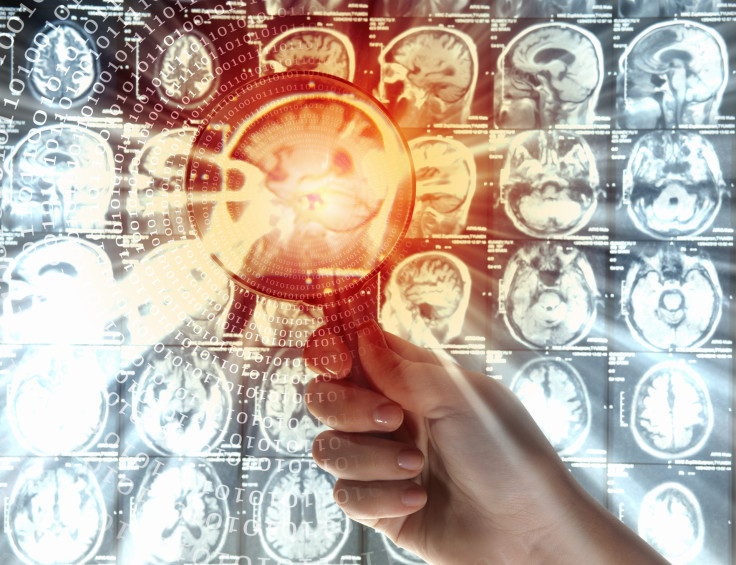Predicting Teen Alcohol Abuse Before Their First Drink: Clues Found In Brain's Connections

You can usually tell which kids are going to struggle forming a healthy relationship and respect for alcohol once they start experimenting in their teenage years. But what if we were able to predict alcoholic behavior while their young brains are still developing? Researchers from the University of Maryland School of Medicine collaborated with neuroscientists at Georgetown University Medical Center to determine if they could predict alcohol abuse in teens before they even have their first sip.
"What this study is attempting to do is identify the differences in the brains of adolescents who go on to misuse alcohol and other drugs," said the research project’s director Dr. John VanMeter, from Georgetown University, in a press release. "If we know what is different, we may be able to develop strategies that can prevent the behavior." The four key findings of the project were funded by the National Institutes of Health and will be presented at the Society for Neuroscience’s annual meeting this year.
Researchers studied a group of 135 preteen and teenage boys and girls who were an average of 12.6 years old, in order to find out if their brains’ showed signs of alcoholism before their brains knew what alcohol tasted like. All teens were tested in an MRI machine to see how strong or weak their brain connections were and how they interacted. After the participants’ parents filled out a questionnaire about their children’s behavior and exposure to drugs or alcohol, researchers compared results with the teen brains' executive control network (ECN).
"We know impaired functioning in the ECN is linked to an earlier age of drinking onset and higher frequency of drinking, but it was unclear whether this dysfunction occurred before drinking or was a consequence of alcohol use," project researcher Tomas Clarke said in the release. Clarke and his team found children who were at high risk for alcohol abuse had significantly fewer connections in the ECN than the low-risk group of kids. "Our findings suggest reduced prefrontal cortex development predates alcohol use and may be related to future alcohol use disorders."
The prefrontal cortex is responsible for a lot of the impulsive decisions teens and young adults make in their lives. It makes a person think about the short- and long-term consequences, however, this portion of the brain doesn’t fully develop in girls until they’re 21 and boys until they’re 25 years old, according to past research. By looking at how the prefrontal cortex connects to the insular cortex, researchers were also able to see how their participants processed emotions.
"Less connectivity predicted higher levels of impulsivity," said Benson Stevens, a research student at Georgetown University, in the release. "Importantly, these effects were observed before the onset of alcohol use. The reduced connectivity between these brain regions could be an important factor in adolescent alcohol use given that reduced inhibitory control has been found to be a factor in alcohol use disorders."
Alcoholism And Diet's Effect On The Brain
The study also went beyond the brain’s connectivity and examined how sugar was affecting their relationship with alcohol. One researcher at VanMeter’s lab, Dana Estefan, said adults with alcoholism have a stronger preference for sweet tastes. Along with their sweet tooth, alcoholics also have impulsive behaviors and the inability to delay gratification. It turns out the same goes for children.
Kids who regularly ate a high-sugar diet had greater activation in the right superior temporal gyrus and right insula of the brain. Both these regions are partially responsible for impulsivity, emotional overeating, reward seeking behavior, and drug addiction. "Our findings could potentially mean a positive correlation between impulsivity and sugar intake in adolescents, but more research needs to be done on this," Estefan said.
When registered dietician Valerie Darcey took a look at the brain’s relationship to food and addiction, she suggested looking at docosahexaenoic acid (DHA) intake. DHA is one of the key omega-3 fatty acids that, in the past, has been proven to help with memory and curb children with attention-deficit disorder.
After finding out how much DHA children were eating on a regular basis, she watched their brain scans for impulsive behaviors. She found no difference in kids with high or low DHA intake, but kids with lower levels had to work their brains harder to work properly. "This tells us that the brains of the kids eating less DHA may not be developing like those eating more DHA," Darcey said. Preventive measures for life-long alcohol abuse could start as early as the formative years of a child’s diet.
Source: VanMeter J, Darcey V, Estefan D, et al. At Neuroscience 2014. 2014.



























